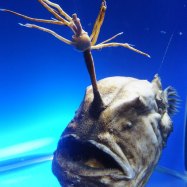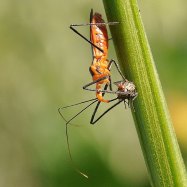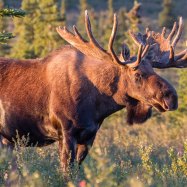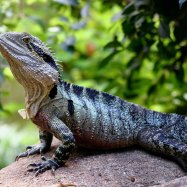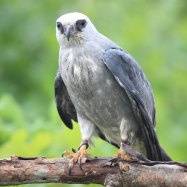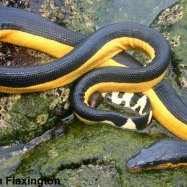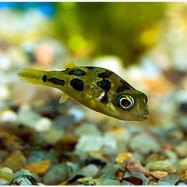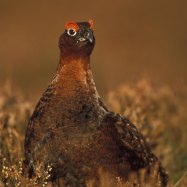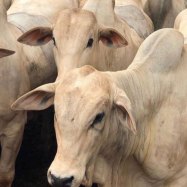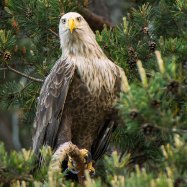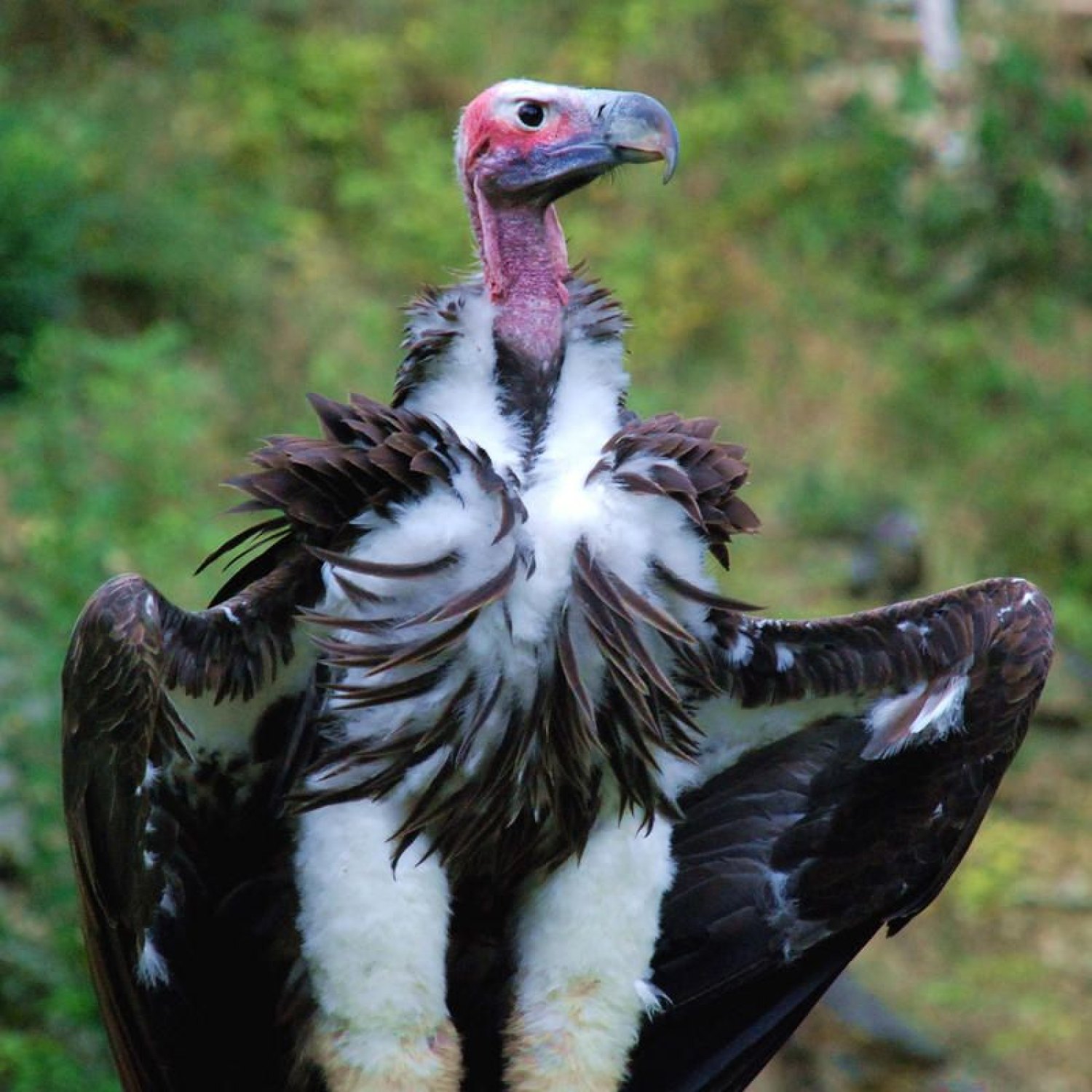
Lappet Faced Vulture
105-115 cm
The Lappet Faced Vulture is a fascinating bird found in Sub-Saharan Africa. At 105-115 cm long, it is one of the largest vulture species with a distinct body shape and a heavy bill. As part of the Accipitridae family, it plays a crucial role in the ecosystem by scavenging and keeping it clean. Despite its intimidating appearance, this vulture is a peaceful and essential member of the African wildlife. #Animals #LappetFacedVulture #SubSaharanAfrica
Animal Details Summary:
Common Name: Lappet Faced Vulture
Kingdom: Animalia
Habitat: Savannah and open grassland
The Mighty Lappet Faced Vulture: The King of African Skies
The African savannah is known for its diverse range of magnificent creatures, but one bird stands out among the rest - The Lappet Faced Vulture. With its impressive size, striking appearance, and fascinating behavior, this bird has captured the imagination of many, and rightfully so. In this article, we will take a deep dive into the world of the Lappet Faced Vulture and discover what makes this bird truly a king of the African skies.A Bird of Many Names
Scientifically known as Torgos tracheliotos, the Lappet Faced Vulture is a member of the Accipitridae family, found in the kingdom of Animalia Lappet Faced Vulture. It is also commonly known as the Nubian Vulture, Nubian Lappet Faced Vulture, or the Lappet Faced Vulture. Its name is derived from the lappet-like folds of bare flesh on the side of its head, and its tracheliotos (Greek for "neck feather") distinguishes it from other vultures with similar appearance.A Habitat Fit for a King
The Lappet Faced Vulture is primarily found in the open grasslands and savannahs of Africa and southwestern Arabia. These areas provide the perfect habitat for the vultures to thrive, with their vast open spaces and abundance of carcasses to scavenge on. Sub-Saharan Africa is the bird's most common location, and they can be found in various countries such as Ghana, Chad, Ethiopia, Kenya, and Tanzania.Diving into Class and Order
As a member of the class Aves, the Lappet Faced Vulture shares characteristics with over 10,000 other bird species. Its order, Accipitriformes, includes other birds of prey such as eagles, hawks, and kites. This order is known for its strong, sharp talons and hooked beaks, all specially adapted for their hunting and scavenging behavior.The King's Appearance
The Lappet Faced Vulture's appearance is both striking and intimidating Lionfish. With a weight of 5-7 kg and a length of 105-115 cm, these birds are among the largest birds of prey in the world. Their wingspan can reach up to an impressive 240-280 cm, making it the largest wing area of any living bird. The coloration of their feathers is predominantly dark brown to black, with a whitish collar around the neck, and their head is covered in a downy white plumage, creating a unique contrast.A Heavy Bill for a Heavy Duty
One of the most distinctive features of the Lappet Faced Vulture is its heavy and powerful bill. This bill is specially designed for tearing flesh off carcasses, a task that is crucial for the bird's survival. They have powerful jaw muscles, which enable them to make deep, precise cuts through the tough skin of their prey.The Scavenging Technique
The Lappet Faced Vulture is a scavenger, meaning it feeds on the carcasses of dead animals. Its scavenging behavior is vital for maintaining a healthy ecosystem, as it helps prevent the spread of diseases and controls the population of scavengers. These birds have unique adaptations that allow them to thrive in this niche, such as a highly acidic stomach that can digest rotten meat and a strong sense of smell that helps them locate carcasses from great distances.Surviving in the Wild
Given their scavenging behavior, Lappet Faced Vultures face many threats in the wild. Habitat loss, poisoning, and poaching for traditional medicine are all factors that have contributed to their decline in certain regions. However, these birds have a unique and fascinating behavior that helps them survive even in the toughest conditions - communal nesting.Strength in Numbers - The Power of Communal Nesting
The Lappet Faced Vulture is one of the few bird species that practice communal nesting, where a group of vultures comes together to construct and defend a single nest. This behavior has several advantages, as it ensures the safety of the eggs and young chicks while also providing strength in numbers against potential predators. It also allows the birds to share knowledge and resources, creating a strong community that can support each other during harsh times.Saving the King of the Skies
As with many other species, the Lappet Faced Vulture is facing a decline in its population. However, dedicated conservation efforts have been put in place to protect these magnificent birds. These efforts include setting up protected areas, raising awareness, and implementing anti-poaching measures. In 2017, the International Union for Conservation of Nature (IUCN) upgraded the Lappet Faced Vulture's conservation status from Endangered to Critically Endangered, highlighting the urgent need for conservation efforts.Preserving the Legacy
The Lappet Faced Vulture is not just a bird, but a symbol of the African savannah and its diverse ecosystem. Its presence in the skies serves as a reminder of the delicate balance of nature and the importance of conservation. By protecting the Lappet Faced Vulture, we are not only saving a species, but we are also safeguarding the legacy of Africa's majestic skies.Conclusion
In conclusion, the Lappet Faced Vulture is truly a remarkable bird, not only for its physical appearance but also for its unique behavior and vital role in its ecosystem. As we continue to learn more about these birds, it is imperative that we work together to protect them and ensure their survival in the wild. By doing so, we are not only preserving the legacy of the Lappet Faced Vulture, but we are also contributing to the preservation of our planet's natural balance.

Lappet Faced Vulture
Animal Details Lappet Faced Vulture - Scientific Name: Torgos tracheliotos
- Category: Animals L
- Scientific Name: Torgos tracheliotos
- Common Name: Lappet Faced Vulture
- Kingdom: Animalia
- Phylum: Chordata
- Class: Aves
- Order: Accipitriformes
- Family: Accipitridae
- Habitat: Savannah and open grassland
- Feeding Method: Scavenger
- Geographical Distribution: Africa and southwestern Arabia
- Country of Origin: Various countries in Africa
- Location: Sub-Saharan Africa
- Animal Coloration: Dark brown to black
- Body Shape: Large bird with long wings and a heavy bill
- Length: 105-115 cm
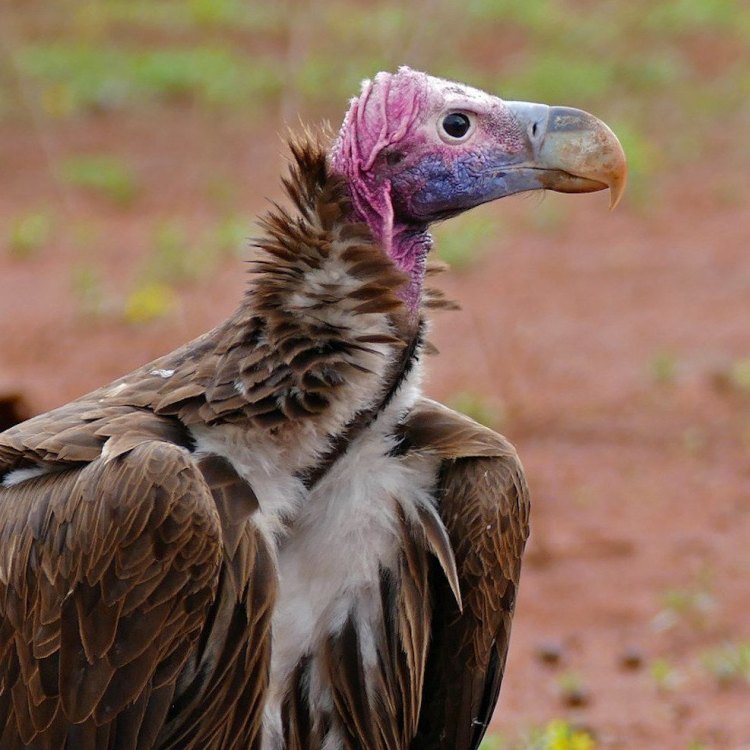
Lappet Faced Vulture
- Adult Size: Large, weighing up to 9 kg
- Average Lifespan: Up to 45 years
- Reproduction: Sexual
- Reproductive Behavior: Monogamous, forming long-term pair bonds
- Sound or Call: Loud guttural hissing sound
- Migration Pattern: Non-migratory
- Social Groups: Solitary or small groups
- Behavior: Aggressive towards other vultures at carcasses
- Threats: Habitat loss, poisoning, and collision with power lines
- Conservation Status: Endangered
- Impact on Ecosystem: Important scavengers, help prevent spread of diseases
- Human Use: None
- Distinctive Features: Large size, heavy hooked bill, bare pink head with lappets
- Interesting Facts: Has the largest wing area to body weight ratio of any bird
- Predator: No natural predators
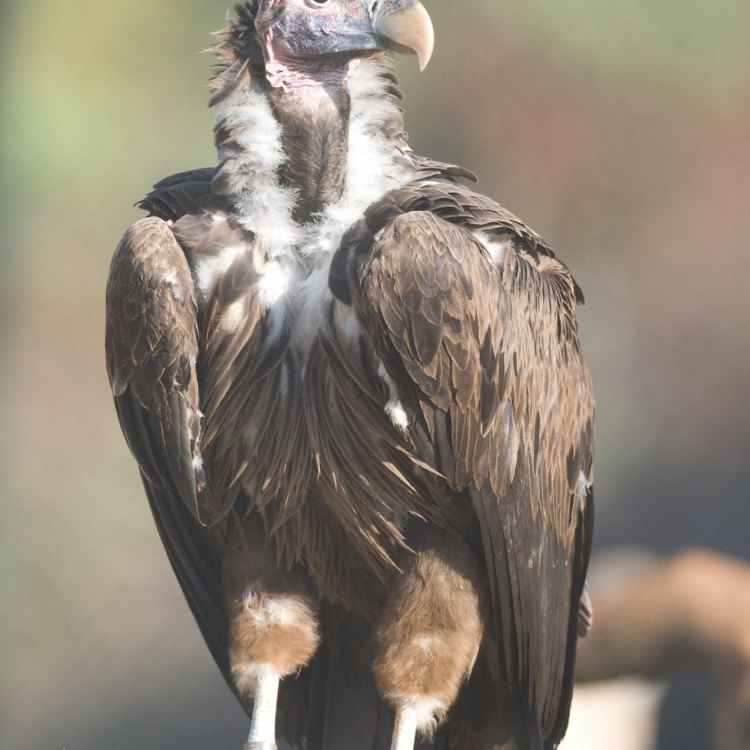
Torgos tracheliotos
The Majestic Lappet Faced Vulture: An Endangered Giant of the Skies
The vast and open landscapes of Africa are home to some of the most fascinating creatures on Earth, and the Lappet Faced Vulture is no exception. This awe-inspiring bird of prey is the largest vulture in Africa, soaring high in the sky with an impressive wingspan and a distinctive appearance that is hard to miss.With its endangered status and unique features, the Lappet Faced Vulture is a symbol of the importance of preserving and protecting our natural world. In this article, we will delve into the fascinating world of this magnificent bird, exploring its behavior, threats, and impact on the ecosystem PeaceOfAnimals.Com.
The Largest Vulture in Africa
The Lappet Faced Vulture, also known as the Nubian Vulture, is a member of the Accipitridae family, along with other birds of prey such as eagles and hawks. It is found in the savannas, grasslands, and arid regions of sub-Saharan Africa, from Senegal to Ethiopia, and down to South Africa.
One of the most striking features of the Lappet Faced Vulture is its size. As an adult, it can weigh up to 9 kg, making it the heaviest vulture in Africa. It also has a wingspan of up to 2.8 meters, giving it the largest wing area to body weight ratio of any bird. These features make it an impressive and formidable creature, capable of soaring high and spotting its prey from a distance.
A Long and Social Life
The Lappet Faced Vulture is a long-living bird, with an average lifespan of up to 45 years. This is significantly longer than other vulture species, which typically live between 20 to 30 years Lizard. This longer lifespan can be attributed to its large size and slow metabolism, as well as having no natural predators in the wild.
Like most birds, the Lappet Faced Vulture reproduces through sexual means. However, what sets it apart from other vultures is its reproductive behavior. It is monogamous, forming long-term pair bonds with a single mate. These pairs are known to stay together for many years, and if one partner dies, the other will often find a new mate.
A Unique Call and Solitary Behavior
The Lappet Faced Vulture is a vocal bird, using a loud guttural hissing sound to communicate. This is especially evident during feeding, where they use their call to display dominance and ward off any competition. When not feeding, they tend to be solitary creatures, only coming together in small groups at waterholes or in nesting colonies.
Aggression at Carcasses
Vultures are known for their role as scavengers, feeding on carrion and playing a crucial part in the ecosystem. The Lappet Faced Vulture is no different, using its powerful beak to strip the flesh off carcasses. However, this behavior can lead to aggression towards other vultures at the dinner table. They will fiercely defend their spot, even against larger vultures, and are known to be quite aggressive towards those who dare to challenge them.
Threats to the Species
Despite its size and formidable appearance, the Lappet Faced Vulture is facing numerous threats that have led to its decline in numbers. The most significant threat is habitat loss, as the conversion of natural habitats to farmland and human settlements reduces the vulture's available food sources and nesting sites.
Another major threat is poisoning, either by being intentionally targeted as nuisance birds or through consuming poisoned carcasses. This can have devastating consequences for vulture populations, as the toxic substances can quickly spread through the food chain and affect other scavengers and predators.
Additionally, collision with power lines and wind turbines poses a significant threat to the Lappet Faced Vulture, as they often fly low to the ground and can easily collide with these structures. Unfortunately, these collisions often result in death or severe injuries, further impacting their already dwindling numbers.
A Species in Danger
Due to these threats, the Lappet Faced Vulture is currently listed as endangered on the International Union for Conservation of Nature (IUCN) Red List. If urgent action is not taken, this majestic bird of prey could face extinction in the near future.
The Importance of Vultures in Ecosystems
While they may not be the most popular or glamorous creatures in the animal kingdom, vultures play a crucial role in maintaining healthy ecosystems. As scavengers, they prevent the spread of diseases by quickly disposing of carcasses that could otherwise contaminate water sources and spread illnesses.
The decline of vultures in certain areas has led to an increase in carcasses left to rot, which can result in an increase in disease-carrying insects and rodents, leading to potential health risks for humans and other animals. This highlights the importance of preserving and protecting the Lappet Faced Vulture and other vultures in the wild.
No Human Use
Unlike some other bird species, the Lappet Faced Vulture has no known use for humans. They are not kept as pets, and their body parts are not used in traditional medicine or rituals. This further emphasizes the need to protect them solely for their role in maintaining the delicate balance of ecosystems.
A Unique and Distinctive Appearance
The Lappet Faced Vulture's physical appearance is also worth mentioning. While its size and wingspan are impressive, its most distinctive features are its heavy hooked bill and bare pink head with lappets. These lappets, or fleshy folds of skin, are used for thermoregulation, helping the bird to regulate its body temperature in hot African climates.
A Bird of Fascinating Facts
Apart from being the largest vulture in Africa, the Lappet Faced Vulture is also known for its high intelligence and problem-solving abilities. In certain studies, they have been observed using tools to reach food, which is a rare phenomenon in the animal kingdom.
Additionally, unlike most vultures, the Lappet Faced Vulture is non-migratory, staying in one area throughout the year. This could be due to their ability to adapt to different habitats and food sources, allowing them to remain in the same area, even when other vultures migrate in search of food.
In Conclusion
The Lappet Faced Vulture is truly a remarkable bird, with its impressive size, unique features, and crucial role in the ecosystem. Despite facing numerous threats and being listed as endangered, there is still hope for this magnificent bird of prey. Through conservation efforts and raising awareness about the importance of vultures, we can ensure that the Lappet Faced Vulture continues to soar high in the African skies, for generations to come.
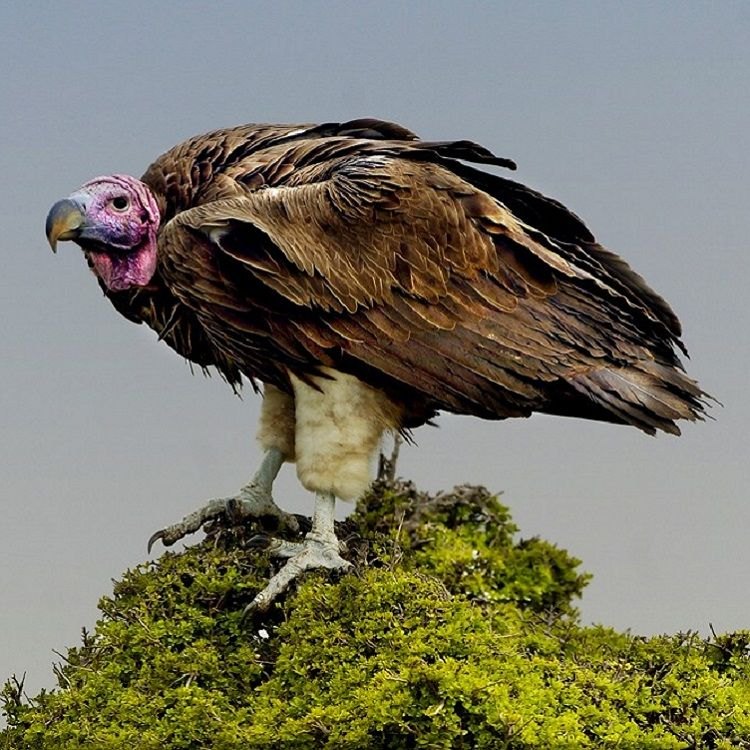
The Mighty Lappet Faced Vulture: The King of African Skies
Disclaimer: The content provided is for informational purposes only. We cannot guarantee the accuracy of the information on this page 100%. All information provided here may change without prior notice.

